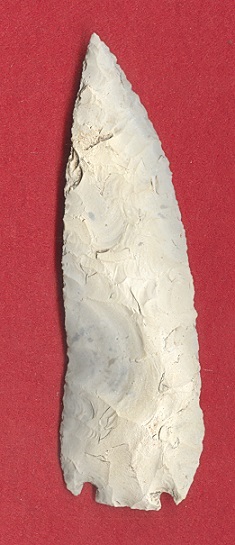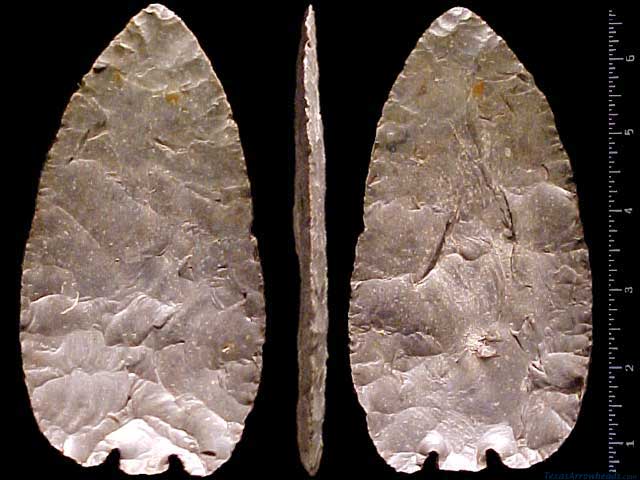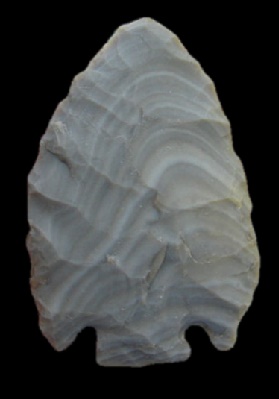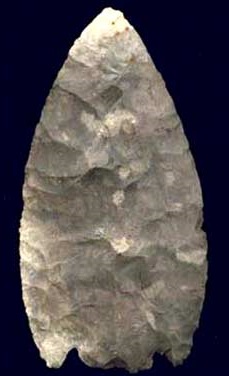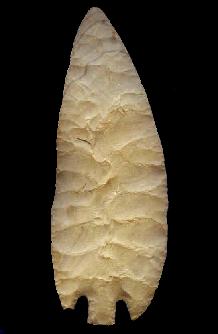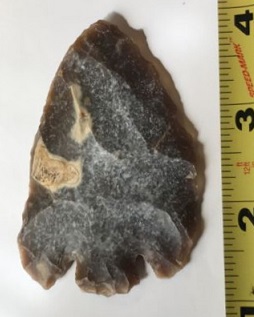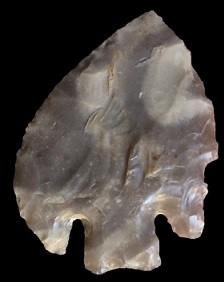Outline is Representative of Size and Shape:
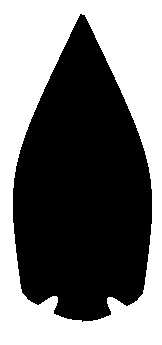
Name Details:
Identified By: J. T Patterson
Named For:
Date Identified: 1936
Type Site:
Identified By: J. T Patterson
Named For:
Date Identified: 1936
Type Site:
Point Validity:
Valid type
Patterson was an anthropologist at the University of Texas. Patterson identified the Corner Tang and Base Tang knife which was named based upon the location of the hafting region. This knife was named in a professional publication and has limited professional references. This is considered a valid type.
Patterson was an anthropologist at the University of Texas. Patterson identified the Corner Tang and Base Tang knife which was named based upon the location of the hafting region. This knife was named in a professional publication and has limited professional references. This is considered a valid type.
Base Tang Knife
Cluster: Description of Physical Characteristics and Flaking Pattern:
This is a medium to large triangular to ovoid knife with a flattened cross section. The blade is broad and excurvate. The blade is commonly asymmetrical. Small notches enter the base forming barbed shoulders and stem that may vary from straight to expanding. The base is convex to straight. This point has a random flaking pattern.
Size Measurements:
Total Length - 70 to 130 mm, Stem Length - 3 to 13 mm, Blade Width - 35 to 80 mm, Stem Width - 10 to 25 mm
Total Length - 70 to 130 mm, Stem Length - 3 to 13 mm, Blade Width - 35 to 80 mm, Stem Width - 10 to 25 mm
Commonly Utilized Material:
Additional Comments:
Distribution: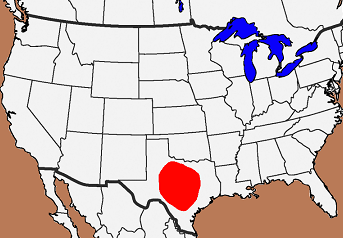

Distribution Comments:
This point is primarily found in central Texas.
This point is primarily found in central Texas.
Age / Periods:
Date: 4,000 - 2,000 B.P.
Cultural Period:Middle to Late Archaic
Glacial Period: Neoglacial to Roman Warm
Culture:
Date: 4,000 - 2,000 B.P.
Cultural Period:Middle to Late Archaic
Glacial Period: Neoglacial to Roman Warm
Culture:
Age Details:
Other points in this cluster / Related / Associated Points:

